#i love you aibileen and minny
Text
i love you female friendships in media i love you nontoxic femininity i love you girls caring for one another i love you positive examples of women unequivocally lifting each other up and supporting each other. i love you women
#i love you ann perkins and leslie knope#i love you jess and cece i love you eleanor and tahani#i love you derry girls i love you golden girls#i love you cher tai and dionne#i love you a league of their own#i love you aibileen and minny#i love you pitch perfect i love you bottoms#i love you sisterhood i love you girlhood!!! i love you!!!!!!#i love you steel magnolias#i love you booksmart#i love you little women!!! i love you bridgerton!!!!#and i love you uptown girls <3333#talk tag
4 notes
·
View notes
Text
The list of a book for the reading for the next two weeks
The Other Half by Sarah Rayner
Chloe, the heroine of Sarah Rainer's debut novel, instantly causes sympathy. Here she is on the first pages of the book puffing in the gym - the figure cannot be called a model, and there is no special zeal for classes. And we immediately think: “Bingo! Finally, a book is about an ordinary person, and not about a distant and not quite living ideal. " Yes, Chloe likes to drink wine in the evenings with an old friend, in the morning she looks for clean clothes in a pile near the bed for a long time, forgets an important article at home (with whom it does not happen!), Sometimes comes to work with a hangover and will not refuse a delicious sandwich with bacon (sometimes you can!). And she, like all of us, is wrong. And it seems that now on the verge of a serious mistake - an affair with his married boss Jamie. Chloe is trapped in a trap that many pretty young girls fall into: a relationship with a man who is not only married, but also can significantly affect her career. However, this is not all the dangers.
The Year I Met You by Cecelia Ahern
Cecilia Ahern, a young world-renowned writer, drew attention to the problems of over-motivated women. A common type: herself, everything herself, only herself, and delegation of powers is for weaklings. The heroine of The Year I Met, Jasmine is a workaholic squared. Of those who cannot live without a daily planner packed to capacity. Even shopping at the supermarket is clearly planned. Realizing that the case smells like a major neurosis, Jasmine's bosses give her "garden leave" - a year's time-out without the right to get another job. Tragedy! The curtain! Having lost his mind for a couple of days with idleness and almost losing his mind, Jasmine decides, in the literal sense of the word, to go on "garden vacation". A funny book about who you should never become.
Five Quarters of the Orange by Joanne Harris
From her mother, Framboise inherited an album of culinary recipes - not a lot, given that her brother Cassis got the farm, and her older sister Ren-Claude - a wine cellar with all the contents. But the whole trick is that on the margins of the album, next to recipes for various dishes and herbal remedies, the mother wrote down her thoughts and confessions regarding some events in her life - in a word, she kept a kind of diary. And in this diary Framboise tries to find answers to the dark mysteries of the past.
The Help by Kathryn Stockett
American South, the 1960s. Eugenia "Skeeter" Phelan has just graduated from university and returns home to the sleepy town of Jackson, where nothing ever happens. She dreams of becoming a writer, breaking out into the big world. But a decent girl from the South ought not to indulge in such stupid illusions; a decent girl should get married and fuss around the house. The wise Aibileen Clark is thirty years older than Skeeter, has served in the homes of whites all her life, has nurtured seventeen children and has long expected nothing from life, for her heart is broken after the death of her only son. Minny Jackson is the finest cook in all of Jackson, and she is also the most daring maid in town. And a sharp tongue more than once has done her a disservice. Minnie never stays in one place for a long time. But even the most arrogant white ladies shouldn't mess with Minnie. Two black maids and an inexperienced white girl are united by one thing - a heightened sense of justice and a desire to somehow change the order of things. Will these three be able to withstand the whole world? Will they be able to survive this struggle?
Can You Keep a Secret? by Sophie Kinsella
Sophie Kinsella woke up famous after the novel about "shopaholic" Becky. By the way, this type is as close as possible to Bridget Jones. But if everyone knows about Becky (if not from the book, then from the film adaptation), then in the little funny novel "Can You Keep a Secret?" not so wildly popular. And in vain. Because Emma will make anyone smile. This girl has one unusual habit: as soon as she flies somewhere and the plane gets into a zone of turbulence, Emma immediately starts chatting incessantly. Such is the unconventional way to calm down. And everything would be fine if one day the biggest boss did not find himself in the next chair, who heard a lot of interesting things about himself and his subordinates. It's time to say "oops" and see what happens next.
We’re going to start reading this Monday, so we have two days to choose! Please, write which book you want to read!
p.s. if you read one of these books, please, send us your review!
Love x
#theguiltypleasurebookclub#bookblr#booklover#books and libraries#book review#bookalcoholic#bookaesthetic#library#library aesthetic
53 notes
·
View notes
Text
The Help
The help is personally one of my favorite movies. It has everything I look for in a good movie, comedy, character, romance, and a lesson. My favorite character was Minny. She was strong and funny. The movie took place in the 1960s racism is alive and encouraged. The movie is based on the treatment black maids experience during this time period. Black women usually would be nannies to white families. The innocent children loved them and treated them with care. However, the adults in particular the white mothers would mistreat and look down upon the black nannies. Throughout the movie HIlly, you can think of her as the popular girl, she would influence the mothers into alienating their black nannies. Aibileen, which is the main character, was one of the victims. She convinced her employer to build a toilet outside so Aibileen wont use the same bathroom as them. She was also the reason Minny was fired because she accused her of theft. As revenge Minny tricked Hilly into eating a chocolate pie that contained her feces. Skeeter, a white woman, wanted to write about the experiences these nannies faced everyday. However, the nannies were scared of losing their job if their employers were to find out they were bad mouthing them. In the end they ended up trusting Skeeter and she would document each nannies personal experience. In her book she included the chocolate pie incident as insurance that they would not trace it back to the nannies as Hilly would never admit that she ate feces. She then publicized this book and it became a hit. It sparked conversation on how white women treat black women. In the end Aibileen lost her job, but decided to pursue writing career. Minny left her abusive husband and worked for a new white family that treated her well. Skeeter moved to New York to continue her work.
1 note
·
View note
Text
My Take on The Help

This is a movie I've loved since It first came out and I was so excited to watch it again. It always makes me cry and It always made me wonder why people have so much hatred in their hearts. Race was definitely a crucial aspect of this film as it was centered during the period of segregation. Black people, specifically black women, were not respected. I never got a bad feeling from this film and thought that it showed, realistically what it was or what we know was segregation and the treatment of black people. It never took away from any black woman in this film or in history or fought through the terrible mistreatment of white people. Aibileen, Minny, and all the other black workers honestly could not speak up because of the repercussions that they would get and they were afraid but still did it. Skeeter did wasn’t the center focus or the savior of anything unless you make her. It wasn’t her stories, it was the black workers stories. She didn’t force them, they chose to speak. It doesn’t reinforce the idea of the black woman being a “mammy” because mammies seen as asexual and the woman in The Help had children and others were married. This was the treatment that the got and it’s history that may not be taught in schools or some people are not big on books so it allowed for those visual learners and the ignorant to see what American history is through film. It perfect fits the theme of “Race and Gender in American Film” because of the idea of the black struggle with racism being one of the main topics and also women being the fore front of the movie rather than the male.
0 notes
Note
Hi, I love your blog, I am so glad to have found it. I wanted to ask if you have any rec for books that have multiple POVs and do it well, when i say multiple i mean between 5 and 10. Anything that is NOT Game Of Thrones related.
Thank you! That’s wonderful to hear, and I’m glad you found it as well.
My favorite in recent memory (in no particular order:)
1. ‘Salem’s Lot, by Stephen King.
Viewpoint characters include author Ben Mears, his eventual love interest Susan Norton, high school teacher Matt Burke, priest Father Calahan, precocious twelve-year-old Mark Petrie, and many others as King allows the reader to explore the town and its residents.
He handles the intricate narratives beautifully, and if you’re not squeamish about horror (both the mundane and supernatural variety) it’s a great read.
2. Good Omens, by Neil Gaiman and Terry Pratchett.
One of my favorite books of all time. Viewpoint characters include the beloved angel/demon duo Aziraphale and Crowley, Adam (the Antichrist) and his small posse, the witch Anathema and witch hunter Pulsifer, as well as the Four Horsepersons of the Apocalypse and others. If you love intelligent satire, Pratchett-esque wisdom, and Biblical mythology, this book’s for you.
3. The Help, by Kathryn Stockett.
Granted, this one has only three viewpoint/POV characters -- Aibileen, Minny, and Skeeter -- but it’s handled so beautifully I consider it a must-read for anyone planning on writing a book with multiple viewpoints. Every character feels uniquely her own, with a distinct voice and personality. It’s extremely well done, profound, and entertaining.
4. The Twelve Tribes of Hattie, by Ayana Mathis.
A wonderful and gut-wrenching book about Hattie Shepherd, a Black woman in early 1900s America, and her nine children. Each glimpse into the lives of Hattie and her family as they all recover from the grief of Hattie’s lost dreams -- particularly the death of her firstborn twins -- and find hope for the future is incredibly moving, personal, and human. I highly recommend it.
5. The Forgotten Garden, by Kate Morton.
Okay, this is another book with only three viewpoint characters, but it’s still incredibly beautiful and well done. The viewpoint alternates between three women and three respective time periods as they attempt to reconnect to their forgotten past and histories.
Fair warning: this book is incredibly sad and depressing. Like, Charles Dickens meets the Bronte sisters depressing. Every character has experienced profound loss of one kind or another, and it’s not for the faint of heart. But it’s very beautifully and intelligently done, so if you have the stomach for it, I highly recommend giving it a read.
In any case, I hope this helps, happy reading, and happy writing!
42 notes
·
View notes
Text
The Help

Not only did I fall quickly in love with this 2011 film because of my obsession with the lead actress, Emma Stone, but also because the message portrayed is a strong hitter. The Help, directed by Tate Taylor and derived from Kathryn Stockett's 2009 novel with the same name, is a powerful movie that highlights the challenges black domestic workers faced in 1960s American society. Emma (pictured above, top left) plays the role as Eugenia "Skeeter" Phelan, a young, progressive, white, aspiring journalist of her time. Her unique relationship with the two maids, Aibileen Clark and Minny Jackson, (pictured above, right) is followed as she decides to write a story on the experience of these hard working women in a heavily classist and racist society during the Civil Rights Movement in Jackson, Mississippi.
Skeeter’s intentions of sharing the story of black maids were fueled by her frustrations regarding the mistreatment and clear racial inequality of black people by the white class in which the maids worked for. These maids were referred to as “The Help”. Nearly ninety percent of black women in the South worked as domestic servants during the ‘60s. Some critics of this black domestic working culture referred to the concept as “modern slavery” given the maids were held to high standards, poor pay and less than satisfactory working conditions. These workers were thought of as uneducated, poor and unreasonable people. In a time where sexism existed heavily amongst all colors of people, black women definitely were amongst the few who had it the toughest.
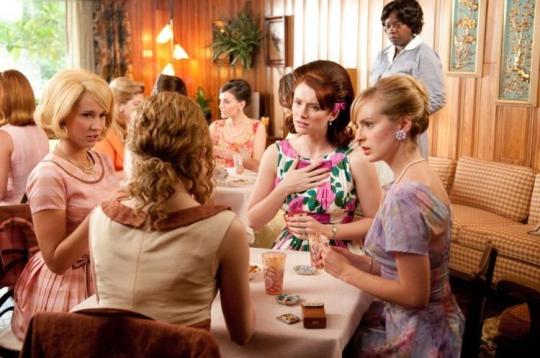
Pictured above, Skeeters white, female, socialite acquaintances look to her with dismay as she often voices her loud and progressive opinions. These women come from wealthy families who possess these domestic workers and have a long line of family history with racist attitudes. One of the families even built separate bathrooms for the help to use. This highly unregulated industry of the exploitation of domestic employees played a hidden yet effective part of the Civil Rights Movement.
This film highly relates to the content of the MultiCultural America course in its emphasis on inherent class and racial structures through the workforce and American society. Having black domestic workers was a very common thing in Southern, white American culture. The mistreatment of these workers also came hand in hand with this culture. The contents of this film remind me of the readings by Richard Dryer, specifically On the Matter of Whiteness, where black imagery was used to foster racist culture. During a time and geographical location where blacks were misconstrued as inferior in terms of ability and intelligence, these stereotypes supported the concept of having black domestic workers who were subject to discrimination and abuse by their white employers.
The movie is excellent. From the storyline to the actors to the “special” pie served, I highly recommend anyone with an interest in race to take the time in watching. Thank you.
Photo 1 source:
Honeycutt, Kirk. “'The Help': Film Review.” The Hollywood Reporter, 10 Aug. 2018, https://www.hollywoodreporter.com/review/help-film-review-219915.
Photo 2 source:
Potter, Tony. “'The Help' Proves That Emma Stone Can Do It All.” Standard Journal, 26 Aug. 2011, https://www.rexburgstandardjournal.com/entertainment/movies/the-help-proves-that-emma-stone-can-do-it-all/article_4be58e60-cf88-11e0-b349-001cc4c03286.html.
0 notes
Text
Discussion Leader Presentation: Eve’s Bayou & The Help
bell hooks writes to testify to the “prolonged silence of black women as spectators and critics was a response to absence, to cinematic negation.” hooks says, “With the possible exception of early race movies, black female spectators have had to develop looking relations within a cinematic context that constructs our presence as absence, that denies the 'body' of the black female so as to perpetuate white supremacy and with it a phallocentric spectatorship where the woman to be looked at and desired is 'white.'” Film such as Eve’s Bayou and The Help, use their narrative plots to portray an accurate account of black female spectatorship through messages of encouragement, inclusion, and most importantly empowerment as they defy the societal constructs white cinema has created through the lens of an “oppositional gaze.”
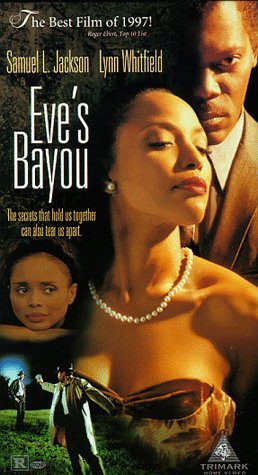
bell hooks
bell hooks is a “pen name” for Gloria Jean Watkins. bell hooks was, and still is, one of the most powerful black women of all time. She wrote about the power that women have: the power to turn racial stereotypes on their head through politics and feminist ideals that have set a precedent in our society. She writes about the intersectionality of race, gender, and the capitalistic views society has on black people. She keeps her name lowercase to emphasize the importance of the subjects she writes about rather than herself as a person.
Eve’s Bayou - Directed by Kasi Lemmons (1997)
Eve’s Bayou is about a ten year old girl who sees first-hand her father’s choices of a love affair, molestation of her sister, and other heavy sexual conflicts. The movie begins at a house party in Eve’s home hosted by her parents. She is saddened when her father invites her older sister to dance and she hides out in the wine cellar, where she eventually fell asleep. She is awakened by her father making love to another woman, who was sexualized in the opening scene. As the plot thickens, the father’s problems become more developed and increasingly worse as he eventually molested Eve’s sister. Through her interests in witchcraft, Eve eventually sets a fatal spell on her father in spite of the crimes he’s committed. The movie concludes with Eve finding out the truth of the molestation, as the father had blamed Eve’s sister, yet Eve finds the truth.
This film seeks to connect Black Womanhood with feminists ideals on sexuality, mistreatment, and misrepresentations. As a black woman herself, Kasi Lemmons, included scenes of adultery, sensual eroticism, supernaturalism through spiritual powers - tying all of these subject back to how black ancestry is portrayed inaccurately in Hollywood. Her focus was on depicting the more social and family oriented problems faced by middle class Blacks in segregated Louisiana.

The Help (2011)- Directed by Tate Taylor
The Help is about a young white journalist’s journey to exploit the mistreatment of the black maids in her town of Jackson, Mississippi during the Civil Rights Movement. The maids were Aibileen Clark and Minny Jackson. The journalist wrote from the perspective of the maids to expose the racism and undertones of capitalism they faced. She named her work “The Help” in order to gain mass attention of the mistreatment. They movie is created to show the strength these women had rather. The focus was on their testimonial recounts rather than the white people or journalist. Tate Taylor is the white male that directed The Help. He grew up in Jackson, Mississippi where he was introduced to racial segregation and profiling, sit-ins, and protests. He said he feels that he truly bled his Mississppi days into the film. His film was based off of the book written by Kathryn Stockett. When asked about why he chose to make the book into a movie, he said, “‘It’s so great, usually these are about civil rights leaders, Malcolm X, Martin Luther King, but this is about normal, everyday African American women doing something.’ So I think that resonated too.” The success of this story is that Taylor didn’t make it about the white people or the white experiences with the black people. He made it about the black females and their testimonial accounts. He interviewed frail ladies to get their accounts and included them in several scenes. I resonate bell hooks’ quote, “That all attempts to repress our/ black peoples' right to gaze had produced in us an overwhelming longing to look, a rebellious desire, an oppositional gaze. By courageously looking, we defiantly declared: 'Not only will I stare. I want my look to change reality.” This speaks of how powerful the actresses in this film were portrayed.
youtube
“Practically, it is a definition which implies that all sexist thinking and action is the problem, whether those who perpetuate it are female or male, child or adult. It is also broad enough to include an understanding of systemic institutionalized sexism. As a definition it is open-ended. To understand feminism it implies one has to necessarily understand sexism.” - bell hooks
In conclusion, bell hooks’ theories of the “oppositional gaze” and the clear division between the human race have long been portrayed through the cinematic society. Thus, these films -Eve’s Bayou and The Help - support her claims in bringing the racial undertones and intersectionalities of feminist ideals and proper treatment to the forefront of current cinematic releases.
Questions:
Share some ideas about how you think women in film are considered to be the standard of beauty. Name people, films, etc.
Are there other films you can think of that poorly demonstrate blacks’ lifestyles and set the beauty standard to women? Provide examples.
Do you feel Hollywood is making a conscious effort to change the way in which black people and minorities are represented.
What are some other controversial narratives that have long been apart of film, but little effort has been done to change the way these people are portrayed?
youtube
youtube
youtube
4:15 black/white director
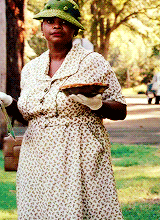
https://www.cinemablend.com/new/Exclusive-Interview-Help-Director-Tate-Taylor-26111.html
1 note
·
View note
Text
A Piece I Found Challenging
Pop Culture Analysis Paper:

You is Kind, You is Smart, You is Important
The Help (2011), directed by Tate Taylor is set in Mississippi in the 1960s-during the era of the fight for civil rights. This movie shows the struggles black people went through even 100 years after emancipation from slavery. The main theme of this movie is the pro-racism that still existed after slavery in the southern parts of America but it also connects to family and community.
Rebecca Skeeter, the main protagonist, who was pursuing her dream to be a journalist and writer, was just returning back to old school Mississippi from the big, modern city. Upon her return, her eyes are opened to the problems that have been around her her whole life, without her previously being aware of them. Unhappy with the way life is in her hometown, she begins interviewing “the help” that she’s known her whole life. Her goal in doing this is to get a perspective of what being a maid is like, what she did not expect was to end up writing a book and almost starting a movement with the maids.
The main theme being portrayed in this movie is racism and the biggest way this is shown is in the depiction of the unfair labor and treatment of the maids and other black people. The black people are living in fear of being unjustly accused or punished by white employers. They were supposed to have equal rights but were often marginalized and sometimes put into danger and they would only have each other and their family. In one of the interviews, Aibileen, the first maid who agreed to talk to Skeeter about her life, opens up about her son being crushed by a tractor at night because he couldn’t be seen. Other than being in danger at all times, the maids are running the white womens’ households and being paid just barely enough to feed their families. One of the many ridiculous things the maids had to do was use an outdoor bathroom because they could have diseases. An interesting concept in this movie is that these white mothers would let the maids take complete care of their young children yet they cannot use the same bathroom. In a quote from Aibileen she says this, “Taking care a white babies, that’s what I do, along with all the cooking and the cleaning. I done raised seventeen kids in my lifetime. I know how to get them babies to sleep, stop crying, and go in the toilet bowl before they mamas even get out a bed in the morning.” Even though they might not admit it, as this is how they’ve lived their whole lives, they’re all racists except Skeeter. All the babies that the maids look after end up just like their mamas, stingy and rude. This quote also connects with my next theme of community and family as through this movie we see the special relationship between Aibileen and Mae Mobley, the girl Aibileen is looking after.
Often times the white babies think of the maids as more of a motherly figure than their actual mothers. We see this with Mae Mobley and Skeeter when she was younger. The children are often neglected and disciplined wrongly by their own mothers. In many flashbacks in this movie we see the bond Skeeter had with her maid, Constantine, who gave her confidence and advice at times when her mother could not. The motivation Skeeter had came from the rage she had when she realized that her mother fired Constantine. Later on in the movie we get the full explanation as to why she was fired. One day when Skeeter’s mother was having an important lunch with a social club of sorts Constantine’s daughter arrives at Skeeter’s house. The women were appalled at the freedom Skeeter’s mother gave the maid and her daughter. Due to the embarrassment and pressure the mother felt, she fired Constantine instead of standing up for someone who was like family to her and her family.
Whenever Mae Mobley is sad Aibileen tells her, “You is smart. You is kind. You is important.” She makes this young girl who is hurt by her mother feel loved and happy. Similar to the relationships between the white girls and their maids, the maids themselves are a kind of family to each other. Their relationship is full of support, laughter, and comfort. They know that they will always have someone to count on if they ever get into trouble. This relationship is seen especially between Aibileen and her best friend Minny, the wonderful cook and sassy maid.
In this article, (Viola Davis) written in 2018, it talks about how Viola Davis (Aibileen) regrets making The Help. She argues that the voices of the maids were not heard, this shows one of the many racial struggles these maids went through. I find it ironic that a movie meant to show the struggles and silence maids and other black people went through still comes off as a white woman hero movie. Skeeter ended up looking like the hero because the book had to be published under her name, giving no credit to the mainds, that’s just one example of how Skeeter came off as the hero to some people.. Although I understand and partially agree with her statement, I also disagree. I think the voices of the maids were portrayed in this movie very well and there were many scenes such as when Skeeter was listening to them tell their stories. One very important story was told after Skeeter had been trying to ask Aibileen questions about being a maid and Aibileen ended up exclaiming in anger the story of her son’s death.
This movie is set in a time after slavery and it shows a new perspective of life for black people because although slavery was gone, racism was still very much there. Through racism we see the unfair labor for black people created by the white people, mostly shown through maids and the families they work for. Through family and community relationships are built between the maids and the children they look after, the most important ones being Constantine and Skeeter and Aibileen and Mae Mobley. By these examples we are shown how the Help is a portrayal of the themes of racism, family, and community.
My letter to you:
Dear Dr. Shea,
In order to write this paper, I first started by brainstorming and summarizing what happened in the movie and the themes in it. I then tried to connect it to African themes and organize my thoughts into paragraphs. When I first started I didn’t really know how to form it into essay form so I kept making bullet points. I believe that my introduction and first body paragraph are strong with good arguments and detail, but my second body paragraph and conclusion might need more refining and explanations. This is a very informational yet funny movie and I really enjoy this movie and I used applied all I knew about it to this paper.
Sincerely,
Olivia.
0 notes
Text
The Help
I chose to write my last tumblr post about the movie “The Help”. The story takes place in Jackson Mississippi during the 1960s. A that time black females were used as housemaids for the rich white families. The maids did all the housework and almost entirely raised the white children for the families. Skeeter a young white female, who is a writer, she returns home from college and she sets out to talk with some of the towns well known maids, Abilieen and Minny to develop a book sharing their stories.
Right away by looking at the cover of the film it is evident there will be some conflict with race in the movie. The cover shows two white women from the movie well-dressed, sitting on a bench while the two black maids are standing off to the side wearing their uniforms. As the movie starts, we are introduced to the white families and the maids that work for the families. The maids are not allowed to sit with the families, eat any of their food, or have any opinion on any matters regarding the household. The white families think the black people are dirty and carry diseases only black people would have. One of the scenes shows Hilly Hollbrook, a white lady, planning a rule to only allow the maids to use the bathroom outside of the home. During a bad storm Minny is stuck facing the decision to go out in the storm to the back-yard outhouse where “her” bathroom is or risk her job by using the family restroom. She ultimately choses to use the family restroom which causes her to lose her job. Another story from the film is, one day the seventeenth child Abilieen is raising came home from school and told Abilieen that she got yelled at by her teacher because she drew a picture of herself with a black crayon. The teacher told the little girl, Mae Mobley, black people are dirty, and she should only use white.
There were many scenes in the film the I felt related to the list we read in “Unpacking the Invisible Knapsack”. One of the many that relate to the list is point number 10, “I can be fairly sure of having my voice heard in a group in which I am the only member of my race”. The maids definitely don’t have their voices heard when they are working in the white family’s home. Another point I want to discuss is this film shows how racism is passed down through generations. The kids adore the maids who are more like a mother to them than their own but once they are able to understand what the other white people are telling them about the black people it become ingrained in their mind that black people are not as good as white. If the kids would grow up not hearing all the negativity surrounding black people, they would likely accept them at an older age.

The cover of the film.
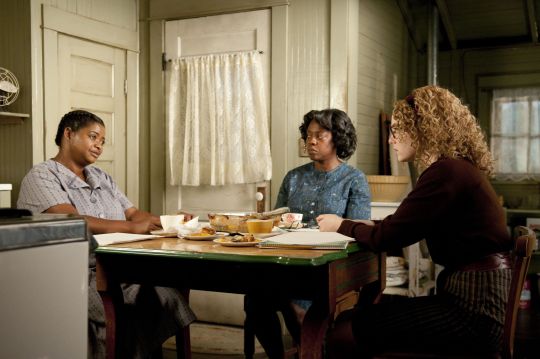
The two maids Abilieen and Minny telling Skeeter their stories.
youtube
The scene where Minny is faced with the decision of using the outside bathroom or the family bathroom.
youtube
Scenes that show the relationship between Abilieen and Mae Mobley. Abilieen has a special saying she used that I love it is “You is kind, you smart, you is important”
https://abcnews.go.com/Entertainment/real-life-maid-child-cared-reunited-20-years/story?id=14079986
An article of a real life story as portrayed in this film about the maid almost raising the little girl.
Citations
Garguilo, Dana. “The Help Video Clip Bathroom Scene.” YouTube, YouTube, 3 Apr. 2012, www.youtube.com/watch?v=E-g9PX-cAWs.
“Minny Jackson, Aibileen Clark, and Skeeter Phaelan in The Help. | The Help | Octavia Spencer, Best Picture Nominees, Emma Stone.” Pinterest, www.pinterest.com/pin/345369865165996355/.
“Real-Life 'The Help': Maid, Child She Cared for Reunited After 20 Years.” ABC News, ABC News Network, 15 July 2011, abcnews.go.com/Entertainment/real-life-maid-child-cared-reunited-20-years/story?id=14079986.
“The Help.” IMDb, IMDb.com, 10 Aug. 2011, www.imdb.com/title/tt1454029/.
Ward-Haddan, Alison. “Aibileen and Mae Mobley.” YouTube, YouTube, 12 July 2016, www.youtube.com/watch?v=pTZ_67iIkls.
0 notes
Text
The Help (11, C+)
There is a lot, a lot, a lot going on in The Help. We know this because this movie is two and a half hours long, though it doesn’t feel like it when you watch it on TV. Or, if it does, you blame the network for breaking it up into such a long sit, the way Freeform can make any Harry Potter film a four-hour experience. There is a lot going on in The Help, but probably too much. For sure, thinking back to the film before I rewatched it, Viola Davis’ performance was the only part I had any real memory of, and even that was somewhat fuzzy. Especially after the 2016 Oscar season saw such a great year for Davis, Octavia Spencer, and Emma Stone, not to mention Bryce Dallas Howard’s great work on Black Mirror and whatever groove Jessica Chastain’s been in for some time, seemingly on the edge of another nomination with A Most Violent Year (better than the nominated slate, but she and Arquette deserve a rewatch) and Miss Sloane (nice haircut, but feh) yet always on the outside looking in (I had also recently seen Zero Dark Thirty and was surprisingly unimpressed with her performance, and was eager to get her again), it felt like I owed it another look-through. What I saw was Viola Davis giving a truly wonderful central performance, surrounded by a lot of performers ably serving the piece without complicating it, deepening it, or keeping up with Davis. No one is really abetted here by writer/director Tate Taylor, whose direction doesn’t do anything to help or guide his actresses, and whose screenplay betrays a lot of shaky politics by giving Emma Stone’s Skeeter so much focus. The Help really tries to do a lot of things politically, but encourages too much broad playing from its interpreters in a film that lives and dies by how well they can play their parts. But what we end up having is a breezy film, pretty entertainingly played, with one heroic performance a lot of political brouhaha to sort through. So reader, let’s get sorting!
Ostensibly, there are two women leading The Help’s crusade, though one of them seems ripe to get shoved to the sidelines. I am, of course, talking about the bizarrely forefronted Skeeter Phelan, the ambitious and racially aware white woman whose attempts to write a book about the black maids in her home town, is the narrative backbone of The Help. Like Jack in Room, or so many other stories where a fascinating central character is observed by a less compelling audience surrogate, The Help does not have the good sense to actually hand over the film to the characters its story is actually about, and it suffers for it. Nevermind that Stone is perhaps the film’s least compelling performer (Bryce Dallas Howard isn’t good, but she’s not boring either), but her career aspirations and romantic journey are so tangential to the conversation every other facet of the film is having that its inclusion is genuinely unnecessary. I’m all for long films if the story requires it, but a lot of her story feels like padding on a film that doesn’t need it. I’d have admired a more self-effacing performance, but Stone seems to flail with giving her castmates or us any kind of characterization to interact with. I’d have loved to see her take on Hilly Holbrook, but instead we just have an idea about Skeeter Phelan, and that’s a shame for everyone involved.
Our real hero, of course, is Aibileen Clark, though certainly more characters could be considered equal drivers in the story. Minny Jackson, Celia Foote, and Hilly Holbrook have almost equal narrative import as Aibileen, and the story certainly shifts between letting each of them drive it for long stretches of time. The inclusion of Skeeter’s separate arc keeps these strands from mingling entirely gracefully, and disrupts the film’s most interesting ideas about the relationship between the black maids who raise the white babies that will grow up and continue mistreating them as adults. You can feel how much this version wants to have a structure like Howards End, which so artfully allows all of its characters to work as engines that drive the story’s narrative and its political ideas, but Tate Taylor’s comedic bent in interpreting The Help undermines this idea from the get go. The cast, too, is almost uniformly limited by Taylor’s direction, asking too little of a fine ensemble that seem completely ready to do more. Not one actor is asked to complicate or deepen their characters the way that the actors of Howards End do, breathing specific life into each of its characters and giving each one plenty of ideas and actions for the audience to respond to, even as the political ideas that power the whole project are present at all times. Here, the limited scope of what Taylor is doing simplifies everything The Help is earnestly trying to be. Bryce Dallas Howard doesn’t just make Hilly Holbrook a flatly antagonistic presence, flaunting her nastiness, but works hard to make us aware that she as much as anyone is disgusted by Hilly by way of turning the woman into a joke as much as she does a threat. Jessica Chastain, easily turning in the best performance among the cast’s white women, makes Celia a welcome, giddy presence, committing deeply to the character’s goodness and her sadness in appropriate moments, but doesn’t seem in any way like a woman who could ever be friends with Hilly and her crew. And as lovely as Octavia Spencer’s Academy Award win is, it’s still a pretty broad performance that seems ripe for a deeper read, and more decision-making on Spencer’s part. I wish it resembled her wonderfully underplayed Hidden Figures performance, especially since her face is so remarkably open and expressive that it often feels like she’s mugging for effect in scenes that just don’t call for it. No one embarrasses themselves or the picture, and it hums along fine, but it’s almost too easy to see the deeper, more complicated picture, one with a more outwardly cozy Hilly, a pricklier Celia, a more reserved Minny, that’s hiding in this film.
What is it about Tate Taylor that he can so capably stymy all but the most committed actors? Davis somehow finds room to thrive in The Help and Emily Blunt manages to turn in a full characterization in The Girl on the Train, but they are palpable exceptions to what both films wind up turning out. The Girl on the Train’s cast seem like they all showed up to set between other projects and haven’t bothered trying in the slightest, outside the remarkably committed Blunt. No one in The Help, thankfully, is dull, but it’s astounding how Taylor managed to get the two sleepiest performances I’ve ever seen Allison Janney give. She makes more of an impact in the two minutes she appears in Margaret, so much more alive on the brink of death than Janney’s cancer-ridden mother ever appears to be. Cicely Tyson has almost nothing to do as Skeeter’s long-gone maid, never mind the walk-on cameo of Tony winner LaChanze as her daughter, though I appreciate the seeming revitalization it gave to public interest in Tyson’s career. At least Sissy Spacek and Mary Steenburgen seem like they’re having a ball, but Spacek especially doesn’t look like she’s trying.
If Taylor doesn’t seem to have coached his actresses in any meaningful way (I’m saying nothing about Chris Lowell’s unworthy suitor), his own staging of the film’s events seem completely uninspired, banking entirely on the strength of actresses has hasn’t tried in any way to coax out more intricate, surprising performances than the ones they end up giving. The comedic tone leaves the film alarmingly without any complication, and the uncomfortably entangled relationships between the white and black women of Jackson, Mississippi are wholly underserved as all the white women fall so neatly under the “unbearably cruel racist” or “fundamentally good liberal” categories. In art like this there’s no way for the maids not to be wholly sympathetic figures, and they should be, but we’re treated to far less time with the maids as a whole to the white society ladies. There’s not one maid that isn’t a cuddly presence to the audience, not one who could confuse a stupid liberal into abandoning racial equality through being too thorny or unapproachable or mean, as is occasionally a thing stupid liberals do nowadays with progressive causes. The broadness of Minny Jackson seems especially symptomatic of making her and Aibileen likable above all else, and I wish that Spencer had made the character a truly bitter woman who sees no way to change her situation except through this white redhead, instead of finding a comedic register for her sourness and her anger. Taylor’s own, scripted insistence on giving so much for Skeeter to do belies his own fundamental misunderstanding of what The Help is about, of what it could be, and the whole piece suffers for it.
For all that Taylor’s decision-making seems to impede most of what The Help is trying to be, there is still enough fertile soil for Viola Davis to craft a wizardly performance of Aibileen Clark. Working within the film’s tone, she makes Aibileen a figure of audience sympathy without into the bathos the role more than accommodates in the slightest. In fact, Davis is delightfully indulgent in the moments of joy in Aibileen’s life without editorializing how sporadic these moments of happiness are, highlighting their rarity by giving in completely to them when they appear. Gossiping with Minny at parties in the kitchens; earnestly caring for Mae Mobley and fondly recalling the other white babies she has taken care of; so touched and grateful and delighted by the recognition she gets from her fellow parishioners once the book is finally published. Her whole first scene is a brilliant introduction to the character, responding to a recollection with a full-mouthed and toothy grin, so visibly responsive and impressed with Skeeter asking what it’s like to raise white babies but not her own child in such a way that you know she’s never been asked anything that personal (at least by a white woman) in her whole life, the way her face tightens into a mask as she looks out the window after glancing at the portrait of the son she knows is long dead without boldfacing it to us. I knocked the character of Minny and Spencer’s interpretation of her as being an easy mark for audience sympathy, and there’s certainly plenty of potential for that kind of manufactured likability that short-shrifts character depth or complexity in Aibi. But at no point does Davis milk Aibileen’s sadness for easy sympathy, asking for empathy instead of pity as she tells the story of how her son died and what telling her stories will mean to her, and to his memory. She cannot seem to stop her tears but never stops to cry. Even in the face of the dehumanizing bathroom laws from Hilly, or the absolute terror she feels running home at night after Medgar Evers is assassinated, she telegraphs the indignities Aibileen faces every day and the ones that are new, shameful lows for her to experience. There’s a bone-deep tiredness to her, but her body is just as active in her joys (laughing at Elizabeth Leefoot’s dress with Minny during the ball), her triumphs (jumping for joy at receiving the check from the book), her shame (that run home), her care (every scene she has with Mae Mobley, earnestly doting on her but worried about who this girl will become), her rage (that gut-wrenching last scene).
I tried ending the introductory paragraph with the phrase “Viola Davis does not a movie make” but in this case, at least, that’s debatable. Her performance is the only reservoir of depth and emotion anywhere in The Help, the most vivid part of the film I could remember before this rewatch and surely what I will remember best about it after (I did in fact spend my entire 4:00-10:30 dishwashing shift on Tuesday reminiscing on her performance, and planning the outline of this piece). I’ve already spent a lot of time thinking about revisiting her performances in Solaris, Far From Heaven, Doubt, Blackhat, Prisoners, and Fences - glorious Fences - and wondering what else I’ll get out of seeing these for second or third times. The Help was so unexpectedly rich to see again specifically on her account, and it’s perfectly fair to remember this film only on terms of her heroics. “You is kind, you is smart, you is important” already seems like it’s permeated the culture so perfectly, perhaps more so than the gifs of Jessica Chastain practically hurtling her coke bottle in joy or the look Octavia Spencer gives once she reveals the secret ingredient in her pie (lord, why are all the biggest insults hurtled at Hilly so scatological?). The Help is a fine film, perfectly acceptable on its own turns even as it belies a lot of wasted opportunity in its script, its cast, and its direction. But we have one unimpeachable feat of acting, given by one of the most powerful and imaginative actresses working today. I am happy to hear a deeper read on this film from someone who loves it, and morbidly interested in hearing the problems someone would have with Viola Davis’s leading performance.
As it currently sits, I am perfectly fine with the mediocrity of The Help, though I wish so much that it had more in it than I got. I also wonder the degree I’m underestimating how well it gets the intraracial environments instead of the interracial environments. Is it that difficult, though, to grasp the social hierarchies of rich, politically stunted white women? Or the inherent terror, without editorializing, that black women felt at that time? Jim Crow is mentioned about once, though he hangs over the proceedings. I still think it’s a massive liability than “the help” are not given the communal screen time wasted by a lot of what Skeeter’s up to, and that easy reversal could’ve done wonders for the film to see how these women react to the opportunity to have their stories published instead of hearing it relayed to us through Aibileen and Minny. And I really wonder what having any real male presence in this affair, to see how white and black men feel about the codependent relationship between the black and white women of The South, would’ve transformed the blueprint of the whole project. Okay, so maybe I’m not perfectly fine with it, but the degree to which Viola Davis is so immensely rewarding in this film makes me forgiving of anything that made room for her genius performance. There is a lot, a lot going on in The Help, and a lot of ways all of that could’ve been made better. Especially with a project that is so politically ambitious, it is disheartening that the film seemingly clubs itself so easily. Yes, there is room in there for Viola Davis to Do That, but it’s independent of her director, and as undeniably sterling as she is in this film, she cannot be used as an excuse to cop for the film’s flaws. Aibileen Clark is a tremendous creation, and one that could surely exist in a better version of The Help. I hope we get a better version of this kind of film soon, but Viola and Aibileen give us the story and the protagonist we deserve, and I am happy to applaud her for it as often as I can.
#the help#2011#tate taylor#viola davis#emma stone#octavia spencer#jessica chastain#bryce dallas howard#my reviews
1 note
·
View note
Text
Tag 20 people you want to know better!
I was tagged by @lostselkieboy and @eyesfilledwith-stars a couple of days ago (Hi! ^^)
Nickname: Meghu, Meg or Cap (because I am nearly ALWAYS wearing my Captain America tee).
Height: 5′6″
Gender: Female
Star Sign: Aquarius
Hogwarts house: Ravenclaw, and my Ilvermorny is Thunderbird and I relate with both to some extent, I guess?
Favorite color: Teal, Rose Gold, Mint and Sea Green, Wine, Charcoal grey, Mustard yellow and Lavender. Augh, I love so many colours, I really can’t pick one.
Favorite animal: Dogs, but I love pretty much most animals.
Average hours of sleep: 6
Favorite fictional character: This is like asking me to choose between my children (if I had any). Ahh, Lupin and McGonagall, from Harry Potter, and Julius Root, Mulch and Holly from Artemis Fowl are perpetual faves. Other current faves include Minny and Aibileen from The Help, Leo, Frank and Hazel from The Heroes of Olympus, Patrocles from The Song of Achilles and Newt Scamander from Fantastic Beasts and Where to Find Them. There are more and I decided to stop myself before I stared making a list that would never end.
Number of blankets I sleep with: One light sheet, or two if I’m sleeping in AC
Favorite singers/Bands: Again, so many, but current faves are Carnival Palace, Big Bad Voodoo Daddy, Kaleo, Hozier, X-Ambassadors, Elvis and Chuck Berry.
Dream trip: Backpacking through Europe with some close friends and getting to see all the places I’ve read about.
Dream job: Author, Cafe Owner, Dog Walker/Groomer/Sitter, Artist and Illustrator, Musician.
When this blog was created: Ahh, I think it was around December 2014?
Current follower count: 225
Why I created this blog: I used to see HILARIOUS posts off tumblr on my Pinterest feed, and I figured I wanted to be a part of it.
I tag @nightkrowe, @bigoceansmallfish, @thejelliestofjellybeans, @preetikiran1016, @literalonionring, @killthatbitchwithabreadstick
1 note
·
View note
Text
Book Review: The Help By Katheryn Stockett
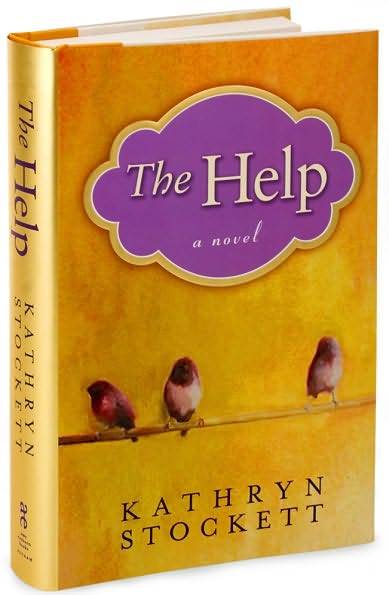
Book Title : The Help
Author: Katheryn Stockett
Goodreads Rating: 4.45/5
My Rating: 4
About the book:
Twenty-two-year-old Skeeter has just returned home after graduating from Ole Miss. She may have a degree, but it is 1962, Mississippi, and her mother will not be happy till Skeeter has a ring on her finger. Skeeter would normally find solace with her beloved maid Constantine, the woman who raised her, but Constantine has disappeared and no one will tell Skeeter where she has gone.
Aibileen is a black maid, a wise, regal woman raising her seventeenth white child. Something has shifted inside her after the loss of her own son, who died while his bosses looked the other way. She is devoted to the little girl she looks after, though she knows both their hearts may be broken.
Minny, Aibileen's best friend, is short, fat, and perhaps the sassiest woman in Mississippi. She can cook like nobody's business, but she can't mind her tongue, so she's lost yet another job. Minny finally finds a position working for someone too new to town to know her reputation. But her new boss has secrets of her own.
Seemingly as different from one another as can be, these women will nonetheless come together for a clandestine project that will put them all at risk. And why? Because they are suffocating within the lines that define their town and their times. And sometimes lines are made to be crossed.
My Review:
This is about 3 different women who’s characters are totally different from one another. Skeeter is very sweet and simple 23 yrs old girl, who feels for The Helps who raise white kids and then the kids turn their bosses. I adored the relation between Skeeter and her help Constantine.
I loved Celia.. I felt sad for her..
I hated Hilly.. she is arrogant and mean lady.. she reminds me some of people I have met in my life.. lol
I felt bad for Mae Mobley.. poor girl needs her mother’s attention but i couldn’t understand Elizabeth’s problem.. Why she can’t give the attention her daughter requires.
I loved Aibileen, how she raised and taught Mae Mobley about simple things in life.
I liked how Minny was so outspoken but I hated that she took all the abuse her husband was offering her.
Oh, and how can I forget Minny’s chocolate pie... um-hun.. if you have already read the book or watched the movie.. you know what i’m talking about ;)
I would have rated 5 star only if it didnt insult Indians.. I felt offended.. :(
#the help#thehelp#book review#books#bookworm#booklr#bookstagram#bookaddict#bookaholic#reading#read#read books#novel
2 notes
·
View notes
Text
Journal Two: The Help
The movie I chose was The Help. I chose this movie because it was a very different time in history, where segregation played a very large role in everyday life. This movie is about a young woman, Skeeter Phelan, as an aspiring author interviewing the help to show their point of view during the civil rights movement. The movie does a great job setting the scene in the 1960s and the first thing that caught my eye was the signs, “colored”. A quote from the movie, “No person shall require any white female to nurse in wards or rooms in which Negro men are placed. Books shall not be interchangeable between a white and colored school, but shall continue to be used by the race first using them. No colored barber shall serve as a barber to white women or girls. Any person printing, publishing or circulating written matter urging for public acceptance or social equality between whites and Negro’s is subject to imprisonment” -Aibileen. This corresponds to our multimedia project two. We had to talk about civil rights movements that happened in a city of our choosing. I chose Milwaukee and a special time in history was the March on Milwaukee. Father James E. Groppi, a white man, was the advisor of the Milwaukee Youth Council. He led the group in a march for equal housing.

Here is a photograph of Groppi (The white man) fighting for the rights of his youths.
The African American women that were maids had obligation to not only doing cleaning duties, but also take care of the babies/children of their white families. Aibileen Clark talked about how she would raise babies and then those babies’ babies. Yet, even though being raised by a maid they still didn’t always treat their “real mom” with respect. I relate this to Richard Dyer’s, “The Matter of Whiteness”. The problem is that people assume that being white is the normal. Dyer talks about how it is crucial to recognize this “normalcy” as false and that being a nonwhite or minority is an exception. Mae Mobley is neglected, along with physical and verbal abuse from her mother, Elizabeth (white), and Aibileen (African America makes it part of her job to instill confidence in the young girl saying, “You is kind, you is smart, you is important”.
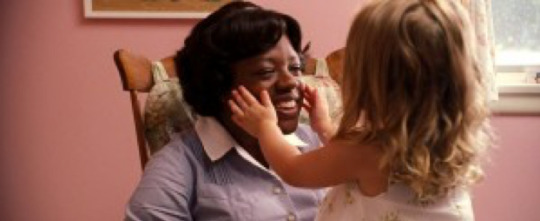
“You’re my real mama Aibee” -Mae Mobley.
She, along with Skeeter, loved her maid that raised her, Constantine. They saw through their white privilege and Skeeter recognized the rights she had and used them to help the African American women to have their voices heard. The book, “The Help”, went viral and gave a perspective no one had ever heard about.
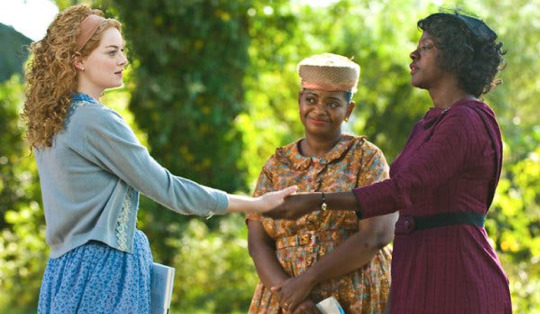
The appreciation Aibileen and Minny gave to Skeeter for the risk she took to help them be heard and give the world a new viewpoint.
Citations:
“200 Nights That Shook Milwaukee: The 1967-1968 Open Housing Marches · MPL.” 200 Nights That Shook Milwaukee: The 1967-1968 Open Housing Marches · MPL, www.mpl.org/blog/now/200-nights-that-shook-milwaukee-the-1967-1968-open-housing-marches.
Dargis, Manohla. “'The Maids' Now Have Their Say.” The New York Times, The New York Times, 9 Aug. 2011, www.nytimes.com/2011/08/10/movies/the-help-spans-two-worlds-white-and-black-review.html.
Emma Henry in The Help, www.hotflick.net/movies/2011_The_Help/emma_henry.html.
“The Help.” IMDb, IMDb.com, 10 Aug. 2011, www.imdb.com/title/tt1454029/.
The Help - Movie Quotes - Rotten Tomatoes, www.rottentomatoes.com/m/the_help/quotes/.
“The Matter Of Whiteness By Richard Dyer Essay.” Bartleby, www.bartleby.com/essary/The-Matter-Of-Whiteness-By-Richard-Dyer-P3PCKWYLC5Q.
“White - The Matter of Whiteness Summary & Analysis.” BookRags, BookRags, www.bookrags.com/studyguide-white/chapanal001.html?gclid=CjwKCAjw7e_0BRB7EiwAlH-.
0 notes
Text
Analysis of Films with Black Female Leads
Film is more than entertainment; it can send the public a message, and teach them about the experiences of others. The Help (2011), Beasts of the Southern Wild (2012), and The Color Purple(1985) are all films featuring Black female leads with the intention of teaching the audience about oppression. Films featuring Black female leads range from fantasy to drama, but all feature an intersection of the same three themes. An intersectionality of films with Black female leads tends to favor themes of race, class or gender, which can be problematic in that they tend to neglect the other themes.
The three films are characteristic in that they are all concerned with the oppression of their Black female leads. While such an oppression is apparent through the themes of racism, classism and sexism, the films also happen to share oppression through physical abuse by the patriarchy. The abuse does not come from outside of the race or class of the protagonists, but is within their homes, on the level of their families. In The Help, Minny is physically abused by her husband, a theme which was explored more in the novel The Help than the film. The abuse by the patriarchy comes from every direction for poor Celie in The Color Purple. She is first repeatedly raped and impregnated by her father, then she is bludgeoned with a rock by her new stepson, and then she is subjected to chronic abuse by her husband Albert, who forces her to have sex with him, and beats her like a child for no reason. While at no age is abuse more acceptable, for Hushpuppy, the protagonist of Beasts of the Southern Wild, what she dealt with from her father was probably less tolerable at the tender age of six years old, described in “An Analysis of Beasts of the Southern Wild” by Maria Beane: “Her neglectful, abusive and angry father Wink throws out scraps to Hushpuppy, giving her enough to survive on and enough to keep her wanting more.”
The differing ages of the protagonists is also brought into question because while Hushpuppy carries the entire film on her back as a six-year-old, Aibileen from The Help is an adult woman, and only a very small piece of her life is shown in the film. On the contrary, in The Color Purple, the audience watches Celie grow from a young girl to an adult woman, as the film takes place over decades. Going along with age is the development of voice in each of the films. Though Hushpuppy is young, she has a powerful voice that develops throughout the movie as she is forced to survive on her own. The Color Purple begins with Celie silent, unable to speak out against her oppressors, and she receives the poignant message, “You have to fight.” Eventually, Celie does learn to fight, and she speaks out against Albert and leaves him. The Help features an ensemble of characters developing their voice; Black domestic servants agree to work with a journalist to publish a book about their experiences as to spread the truth of their oppression. Instead of taking place over a span of time, The Help encapsulates the moment of change, focusing on the events that immediately caused the people to speak out against their oppressors.
Because The Help takes place in a singular moment, the audience does not get to see the change implemented. Unlike the other two films, The Help is not concerned with a period of time, but like the other films, The Help is a period place, taking place in the midst of the Civil Rights Movement, and it emphasizes the importance of its time period by including historical political events in the film. While The Color Purple is concerned enough with time to include the years on the screen, the film does not seem wholly concerned with the politics of the time, instead incorporating the music of the era through Shug Avery. Out of the three films, Beasts of the Southern Wild, treats time the most unusually by not allowing the audience to pin the film to a specific time period. The audience assumes that the film takes place near present day, but with its fantastic and apocalyptic aspects, something seems futuristic. The post-racial culture of the film, which will later be explored in depth, also gives the film a feeling of being out-of-time. Confusion that arises from the time period of the film can be compensated by the familiar setting; in fact, all three films take place in the American South. Need connection to next paragraph
Through the three films intersectionality of race, class and gender, one can notice the favoring of gender through the forcing of traditional gender roles, the ambiguity of gender, and the importance of motherhood. In The Help, all black female characters are forced into domestic servitude. In “Considering Social Divisiveness: Offensive Communication, Historical Fiction, and The Help,” Pat Arneson cites that in the 1960s, “Up to 90 percent of working black women in the South labored as domestic servants in white homes.” (Arneson 15) So while The Help is historically accurate, it focuses entirely on the aspect of Black women's lives that involves them engaging in a traditionally female job. Similarly, in The Color Purple, Celie is forced into servitude as the wife of Albert. When Albert is deciding to take Celie as his wife, he states that he is specifically looking for someone to take care of his children and clean his house, which is exactly what Celie is forced to do. For much of the film, Celie accepts this position without protest, and is very good at being the traditional housewife. Even young Hushpuppy is forced into traditional gender roles, when she is forced to take care of her own house and prepare her own food. In forcing these women into traditional gender roles, the three films highlight the plight of women.
Hushpuppy's traditional gender role only goes so far. At the beginning of the film, the audience may be unsure of whether Hushpuppy is a girl or a boy, as she is dressed in boy's clothes. When it is revealed that Hushpuppy does not have a mother, one can assume that Hushpuppy is probably gender ambiguous because she does not have a female role model to teach her how to be a woman. However, her relationship with her father Wink reveals that he wants her to be a boy. Through the film, Wink refers to her as “man,” and at one point, the “King of the Bathtub.” He expresses to Hushpuppy the value of physical strength by arm wrestling her, teaching her to fish with her hands, and forcing her to break open her own crab. In “An Analysis of Beasts of the Southern Wild,” Beane examines this relationship, stating, “[Wink] wants [Hushpuppy] to be a boy, I sense, not because he would value a boy more, but because he sees a girl as more vulnerable, more delicate, softer, and more unlikely to survive in the harsh world.” (Beane 1) Hushpuppy expresses femininity later in the film when she is wearing a dress, but the pressure from her father to be a boy is confusing and oppressive for the young girl. Her absent mother also affects her identity as Hushpuppy struggles to understand what a mother is.
Motherhood is a consistent expression of gender in the films, as mothers and mothering are important to each of the protagonists. In The Help, Aibileen is in mourning of her son. The women of the film never got to raise their own children because they were always raising someone else's. Even though Aibileen has raised many babies, none of them can take the place of her son. Minny's relationship with her children is very powerful, as unlike Aibileen, she has many of her own to raise, and Minny is faced with disappointment when she is forced to have her daughter become a maid, continuing the oppressive cycle of traditional gender roles. Celie has the same experience when her own children are taken away from her as soon as they are born, and she is forced to raise Albert's children instead. While she raises Albert's children, there is no sign of intimacy between Celie and the children, and she does not mother them. This is in contrast to Aibileen, who had a very personal relationship with the children she raised that were not her own.
Of the three films, The Color Purple handles gender best. In the film, Celie's struggles all arise from the fact that she is a woman, rather than a Black woman, and her voice develops from the notion that as a woman, she was silenced, but she can overcome that oppression. One can argue that The Color Purple is more about womanhood than it is about race. Beasts of the Southern Wild features a complex understanding of gender, and a character whose gender identity is confused through environmental factors. While gender is not central in this film, it is handled very well as a theme. The Help seems to handle gender the least well, because while Aibileen is very dissatisfied with her job, she loves the mothering aspect. The Help not only keeps its main character in a traditional gender role, it also does not focus on the oppression of women specifically, but rather the oppression of the Black community as a whole through the lens of a white female protagonist. While some of the films explore the theme of gender better than others, all three films also explore the theme of classism.
In “Considering Social Divisiveness: Offensive Communication, Historical Fiction, and The Help,” the author refers to the statistic, “Black Americans are 20 times poorer than white Americans.” (Arneson 15) With knowledge of this economic disparity, it seems that the films simply cannot ignore the classism that comes with being a Black female. The Color Purple focuses hugely on classism, but it is classism on the individual level of Celie. Despite the fact that Albert is a wealthy man who is able to provide for Celie, Celie still has nothing of her own. The Color Purple discusses classism through entrepreneurship; for example, Harpo turning his house into a juke joint, which ultimately inspires Celie to start her own pants business and become very successful. Shug Avery, the female who is portrayed as the most independent, is self-made through her singing talents. The Color Purple focuses on the plight of the truly poor, Celie, who literally has no possessions and rises from nothing.
Similarly, Beasts of the Southern Wild focuses on the truly poor, set in a destitute community. Of the three films, Beasts of the Southern Wild certainly favors classism as the most challenging plight of the Black female protagonist. At the start of the film, the audience gets a glimpse of the utter poverty in which Hushpuppy has been raised, but the film takes poverty a step further when a storm destroys the Bathtub, leaving its residents struggling for survival. While Celie has no possessions, she is at least not at the level of Hushpuppy, who must kill her own food to eat, or else resort to eating leaves. Beasts of the Southern Wild is not trying to water down reality; the Bathtub is in-your-face poverty, deliberately shocking to the majority of Americans, especially since the community is full of children. Through elaborate costuming and setting, the film takes the audience into a world of grave poverty.
Grave poverty is not the level of poverty in The Help; though there is some indication that the Black people in the film are poor, they are certainly not destitute. In fact, The Help is rather ironic in that its title references the working class, but the film itself focuses more on racism than classism. In the film, Skeeter writes a book based on the accounts of Black people who have worked as domestic servants, but the book highlights the fact that their plight is entirely because of their race. In reading about the plight of the working class, one would expect to learn about how wealth inequality is so oppressive. The Help does touch on this briefly, as one maid is unable to send her sons to college and is denied a raise, which leads her to steal a ring and ultimately get arrested. However, the film frames this incident as racism showing white police officers aggressively dragging the maid away. Of the three films, The Help neglects classism the most, despite the fact that classism seems to be most relevant to the film, and instead focuses on racism.
In The Color Purple, the race of the protagonist does not seem to be a theme for the first half of the film because every character in the film is the same race. For the first half of the film, the only white people the audience sees are the mailman and several extras in the background. The film also takes place in the American South, at least thirty years earlier than The Help, so it is slightly surprising that race plays such a small role. The Color Purple treats racism similarly to how The Help treats classism. There is a single incident where racism is thematized when Sofia is asked to be a maid to the mayor's wife, and subsequently punches the mayor. However, the incident is framed more as the oppression of women than the oppression of Black people. Sofia is an independent, outspoken woman who turns away from traditional womanly behavior, and because of this, she is jailed and beaten. Other than this singular incident, it is easy find the fact that Celie is Black insignificant. In an entirely Black community, The Color Purple generally avoids racism as an oppressive force, without claiming to be post-racial.
Beasts of the Southern Wild, on the other hand, does claim to be post-racial. The unspecified time period makes is possible that the story takes place in a post-racial world that does not yet exist, making the fact that Hushpuppy's race is never even acknowledged more believable. The Bathtub is a multiracial community, and the children act as siblings regardless of their race. No child is favored more for food or education; the members of the Bathtub seem to be colorblind. Beasts of the Southern Wild is rife with tragedy and a fight for survival, which forces its characters to work together, and implies that the characters have been working this well together since before the time span of the film. To create this post-racial world, it is important that Beasts of the Southern Wild shows the Bathtub both before and after the storm, unlike The Help which does not expand upon what happens after the book is published. At the end of The Help, the audience is expected to know what happens next because the film is historical. However, by ending on such a positive note and leaving the audience to complete the ending with their knowledge of history, the film gives the impression that the world of the film immediately after it ends is a post-racial world. Skeeter, though she was raised similarly to her friends, is not a racist, and the difference between she and her friends is that she went to college. This implies that education cures racism, and thus, this book which will educate the public on the racism experienced by domestic servants, will cure racism. In her article, Pat Arneson explains, “By the end of the story, the presumption is that racism is somehow over in the United States.” (Arneson 15) According to Arneson, if The Help had successfully brought awareness to racism, people would have been ashamed after seeing the film, rather than joyous.
The Help is entirely focused on racism, and this is why it ignores classism. To get this message across, it includes a historical hate crime; the murder of Medgar Evers. White characters in the film attempt to position Blacks as physically different and inferior beings who carry diseases and should not be allowed to use the same bathroom. There is a dichotomy established in The Help where white is associated with cleanliness. The “shit in the pie” incident involving Minny was supposed to be a sickening revenge, but rather it associates Blackness with defecation. While the point of the film seems to be to show how far we have come in the fight against racism, the film occasionally undermines racism by turning serious situations into comedy. Arneson explains this undermining with and example from the film: “Portrayed in the film, when Celia’s husband Johnny does find Minny on his property, she runs, he chases her. The audience laughs. In the era of Jim Crow, too many factual stories exist about white people shooting or killing black people without reason. Minny’s behaviors when running from Celia’s husband are not unreasonable to some audience members.” (Arneson 15) The Help also has the problem of telling its entire story through a wealthy, educated, white female narrator. More so, the film engages themes of gender through the white female narrator. Skeeter is faced with discrimination when she attempts to get a job as a journalist, and is forced to write a housekeeping column because she is a woman. While this is a very real issue, the film frames itself as a film about race, and by mentioning the plights of a very privileged woman, takes away from the plight of the Black women, who face the same sexism, as well as racism and classism. While The Help ultimately favors racism most in its intersectionality of themes, it does so somewhat unsuccessfully.
Through this analysis, one can come to conclusions about which films favor themes of racism, classism, or gender, and which films neglect these themes. The Color Purple most favors gender, but most neglects racism. One can argue, however, that the fact that The Color Purple neglects racism is not problematic because the film describes the experience of a single individual in a unique story. While racism is undeniably an issue for Black women in the 1930s, it was not a significant part of Celie's experience because she was in an entirely Black community, and faced severe oppression for her gender instead. However, the denial of racism is slightly problematic because it is rather unrealistic that Celie personally faced absolutely no racism in the thirty year span of the film. Beasts of the Southern Wild most favors class, and denies race by turning it into something not even notable. Because of its ambiguous temporal setting, the post-racial world of the film is believable. However, the issue of gender could have been expanded further in the film. Beasts of the Southern Wild would have functioned nearly the same had Hushpuppy been a boy, but this is problematic because there are problems that realistically should have arisen because Hushpuppy is a girl. Her physical strength, for example, could have become more of an issue in the film. However, the fact that the film did not place much significance on her gender is understandable because she is six years old, and therefore can function under the category of child, much like how the gender of infants is often irrelevant. Finally, The Help favors racism, while neglecting classism and gender. This neglect is the least excusable because the film is a representation of a historical group of people who certainly dealt with classism and sexism. The oppression that occurs in all three films centers around three broad categories, favoring some more than others, but there is the commonality of oppression through physical abuse.
It seems that the commonality of physical abuse is the most problematic part of the three films. From an outside perspective, one would make the connection that all films featuring Black female leads must feature physical abuse. Because the systematic oppression through racism, classism and sexism are not enough, poverty and minority status must always be accompanied by violence against women. A more positive view of this commonality is that it is to raise awareness of violence against women and the oppression of the patriarchy, furthering the theme of gender in each film. However, it is sad that all three films felt that their message of oppression will not come across strongly enough unless someone is being abused.
0 notes
Text
////////Film Review////////
Synopsis
Warning: may contain minor explicit content.
In 1960’s Mississippi, aspiring writer Eugenia “Skeeter” Phelan kick-starts her career by working for the Jackson Journal, the local newspaper, filling in for a cleaning advice columnist “Miss Myrna”. Unfortunately, Skeeter didn’t have a single clue about cleaning so she turns to Aibileen Clark, her friend Elizabeth’s black maid, for help.
Skeeter had always been the odd one out in her group of southern privileged, prejudiced girlfriends. She was the only one unmarried, the only one with a job, and unlike them, she had an utmost respect for the colored help. She treated them as equals; didn’t discriminate or look down on them at all as she was raised by one herself - Constantine, their elderly black help who she loved dearly.
By helping her with the Miss Myrna column, Skeeter forms a friendship with Aibileen. While she was over at Elizabeth Leefolt’s asking cleaning advice from Aibileen, they overheard the couple arguing about Elizabeth installing a separate colored’s bathroom outside for their maid, her husband angrily commented “Mae Mobley can go to college in that damn bathroom.” To which Elizabeth defends herself by stating that her best friend, Hilly Holbrook, said that it’d add value to their home and that every penny he spends on a colored’s bathroom he’ll get back in spades when they sell. Hilly is so against the idea of them sharing bathrooms with the help, she claims: “It’s just plain dangerous. They carry different diseases than we do.”
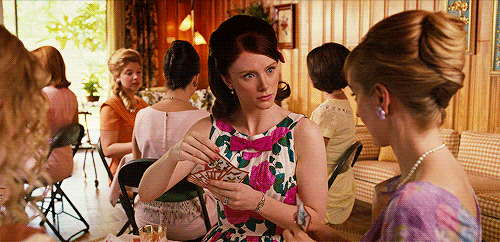
She even goes as far as to draft an initiative named the Home Health Sanitation Initiative, “a disease preventative bill that requires every white home to have a separate bathroom for the colored help.”
Because of this, Skeeter had the idea to write about what it was like to be a colored help in the highly bigoted town of Jackson, Mississippi. Elaine Stein, a literary agent in New York, gives her the green light and and off our little heroine goes.

Aibileen was unsurprisingly hesitant when she was first asked about it since it would put everyone she loved at risk, however, she gives in eventually and helps skeeter with her writing. Skeeter knew what she was getting herself and Aibileen into; she was fully aware that by going through with it she would be going against the law, her family, and her friends but she was ready to shine a light on the racism, discrimination, and mistreatment that’s been going on for ages in their small town.
In the beginning it was only her and Aibileen, until they talked Minny Jackson, Hilly’s headstong maid, into helping them. Soon enough they had at least a dozen colored maids helping them with the book. Sharing stories about the families they were serving, secrets they’ve kept, things they’ve done, things done to them, some were unspeakably gross *cough* Minny *cough* and some were just plain rude.
They weren’t all that bad though, there’s Dr. Dixon, a man who bought 2 acres of land for twice its worth from a racist farmer who threatened to shoot his maid if she stepped foot on his land again, Miss Walters, Hilly’s eccentric mother, and Miss Celia Rae Foote, who is just a “rae” of sunshine. See what I did there? I’m sorry I’ll stop.
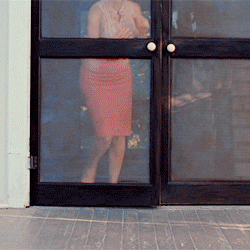
The Characters
I thought the characters in this movie were so well thought out. Their names, backstories, the clothes that they wear, their hair, the way they speak, every single one of them had their own distinct personality that made the movie realistic, compelling, and overall work.
It’s funny because Emma stone (Skeeter) and Bryce Dallas Howard (Hilly) both starred in this film as rivals and as you may or may not know, they both starred in the Spider-man films as Gwen Stacy
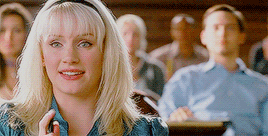
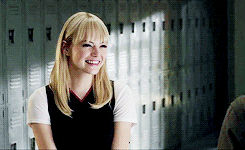
It is literally the battle of the Gwen Stacys

I gotta say, I applaud Bryce Dallas Howard in this film. It takes a really good actor, or in this case actress, to play a role so well and so convincing that you actually want to kick them in the shin. Her role as Hilly Holbrook is the perfect villain; evil and controlling, she’s especially rude to the maids, even to her own poor mother. I mean, I never thought I’d hate any character as much as Ramsay Bolton from Game of Thrones up until now. She’s one of those villains you love to hate, you know, the kind that have absolutely no redeeming qualities and you feel no remorse towards when they get what they deserve. and little Miss Hilly? Oh, she gets the pie.
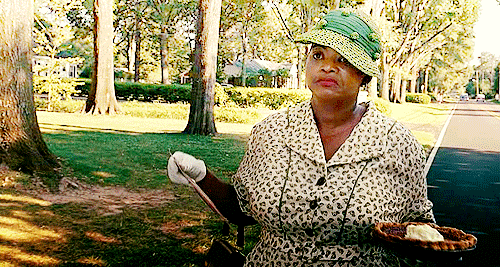
Speaking of Hilly Holbrook, can we just take a minute to appreciate her mother, Miss Walters? Miss Walters (played by Sissy Spacek), was one of my favorite characters in the movie. She was sarcastic and funny. Boy, does she know how to have a good laugh. Whenever she brings up the pie prank and rubs it all up on her daughter’s face, the whole room goes completely nuts. We like anybody who socks it to Hilly.
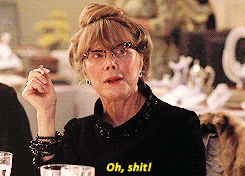
Now Minny Jackson (played by Octavia Spencer), she was a force to be reckoned with. She was a strong woman and she knew it; didn’t take crap from anybody. Not even Hilly Holbrook. I absolutely loved Octavia Spencer as Minny, she nailed every punchline and she had the most iconic line and scene from the entire movie in my opinion, if you’ve seen the movie, then you know exactly what I’m talking about, but if you haven’t, you’ll just have to go see for yourself and find out. *hint: it’s the pie scene*
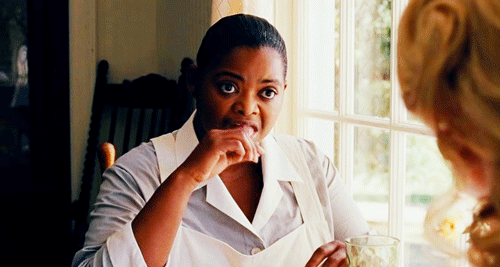
Another character that I absolutely adored is Celia Foote (played by Jessica Chastain), the delightful woman from sugar ditch. She’s a breath of fresh air. With the whole movie feeling so heavy and disheartening, watching her was like watching the sunrise, seeing the first rays of sunlight rise up slowly from the darkness to shine and give light to everything and everyone. It was so refreshing to see a white woman like herself treat Minny, a colored help, like a friend. Makes you think that all is not lost, it surely restores your faith in humanity. A big round of applause for her husband too, Johnny Foote, for being such a stand up guy.

Of course Viola Davis’ (Aibileen Clark) performance was nothing short of outstanding. Her relationship with little Mae Mobley Leefolt will surely make you go “awww” it’s the cutest yet most tragic thing. It’ll play with your heartstrings and it will most likely put even the strongest grown man named Bob shed a tear. Emma Stone absolutely nailed her role as Skeeter, I love how her accent sounds so natural, it really goes with her voice and her personality as a whole.
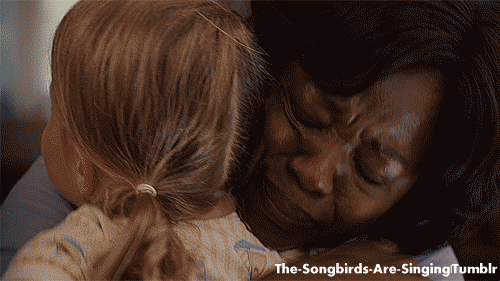
Its Importance
I cannot stress enough the importance of movies like The Help, as it shines a light on a very serious subject. People tend to forget that this is not just a work of fiction, slavery was very much real and rampant back in the 1950s, even way back in the 1870s and unfortunately, in some places in world, it still is to this day. Just because it’s 2018 doesn’t mean we just forget about what happened. Yes it’s good to let bygones be bygones, but it’s still better to learn and educate ourselves with what actually happened in the past because that’s what some of our ancestors lived through, that was our reality.
No person should require any white female to nurse in wards or rooms in which negro men are placed.
Books shall not be interchangeable between white and colored schools or shall continue to be used by the race first using it.
No colored barber should serve as a barber to white women or girls.
Any person printing, publishing, or circulating written matter urging for public acceptance of social equality between whites and negros is subject to imprisontment.
Those were the Jim Crow Laws, can you imagine how life must’ve been like during those times? It gives me the shivers just thinking about it. The only thing that scares me even more than Jim Crow, is it happening again. That is why we need movies like these to remind us of how awful slavery was and to be appreciative of the way we live now.
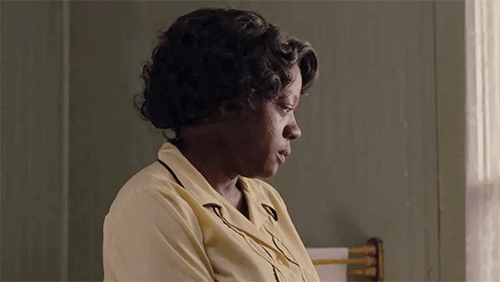
Overall Thoughts
I thought this movie was absolutely fantastic. It had all the elements that would make up a great movie: its was realistic; not at all exaggerated, it was honest; showed the whole truth, and it was engaging. Not once in those 2 hrs and 26 mins. did I get bored or uninterested. I was always on the edge of my seat, watching in anticipation for what’s next to come, my eyes were practically glued to the screen for the entirety of the movie. I was instantly gripped by the riveting story line and the diversity of the characters. I’d rate it a 4.5/5 stars, yes it’s not perfect, it does have its fair share of flaws but then again what movie doesn’t? If you haven’t seen The Help, I highly recommend that you do, it’s 2 and a half hrs of your life you won’t be able to take back, but they’re surely hours you wont regret.

And remember:
You is kind.
You is smart.
You is important.
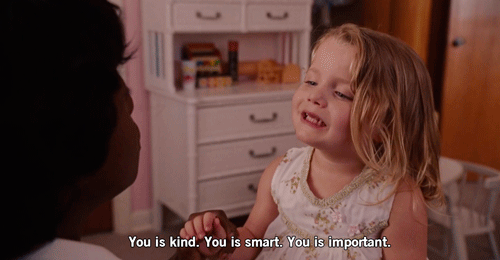
- s o u l e n e o u t
0 notes
Text
The Help - Movie

The Help takes place in Jackson, Mississippi the year of 1963. This period of time was during the Jim Crow laws and racial segregation and discrimination in the southern United States. Even though the Civil War abolished slavery, blacks were still being discriminated against. The Jim Crow law, that Aibileen Clark was deathly afraid of, demanded racial segregation in all public places, such as public schools, public transportation - buses and trains, separate entrances to public facilities such as movie theaters and restaurants, separate drinking fountains and restrooms for whites and for blacks, and to go so far as prohibiting blacks from living in some towns, some black people couldn't vote because they couldn't pass a voter literacy test, and interracial marriage was illegal. The Jim Crow Laws were finally overruled by the Civil Rights Act in 1964 that was initiated by President John F. Kennedy before he was assassinated.
Upon returning from Ole Miss College, Skeeter Phelan (a white socialite woman) desired to be a famous write someday. Skeeter's publisher (Miss Stein) told her to write about what disturbs her. Skeeter became very uncomfortable with the racist attitudes and the disrespectful ways her wealthy socialite friends (Elizabeth Leefolt, Hilly Holbrook, Jolene French) acted towards their maids. It was those uncomfortable feelings that guided Skeeter to write a book depicting the view from the help - the maids. Skeeter's conversation with Miss Stein: "These colored women raise white children, and then in twenty years those children become the boss. We love them, and they love us, but they can't even use the toilets in our houses. Don't you find that ironic, Miss Stein?"
The main character in the movie, Aibileen Clark, is a black maid that takes care of Mae Mobley - Elizabeth Leefolt's daughter. Aibileen takes pride in her work as she states, "Taking care a white babies, that’s what I do, along with all the cooking and the cleaning. I done raised seventeen kids in my lifetime. I know how to get them babies to sleep, stop crying, and go in the toilet bowl before they mamas even get out a bed in the morning."Mae Mobley loved Aibileen. In one scene Mae Mobley caresses Aibileen's cheek and says, "You're my real mama, Aibee."
Minny Jackson is Aibileen's best friend and is notably "the best cook in Jackson, Mississippi." Minny is the maid of Mrs. Walters - mother of Hilly Holbrook. Because of Minny's temper, her brash tongue, and her attempt to use the Holbrook family bathroom, Hilly fired Minny.
Hilly was adamant that black people shouldn't use white people's bathrooms, "Tell Raleigh every penny he spends on a colored's bathroom, he'll get back in spades when y'all sell. It's just plain dangerous. They carry different diseases than we do." (Bathroom Segregation video https://youtu.be/E-g9PX-cAWs). Hilly sent her, "Home Help Sanitation Initiative," to the governor to sign - it would ban all black servants from using their white employer’s bathroom. All the maids in Jackson feared Hilly because she could destroy a maid if she had a grudge against them - which she unfairly did to Minny.
Aibileen, Minny, and Skeeter take on the task of revealing the truth (both good and bad) about the way southern white women and families treated their black maids and service people.
Skeeter first interviewed Aibileen, then Minny decided to help. Soon other maids came forward to share their stories of how they spent their entire lives taking care of southern families and the treatment they received from them. Skeeter also shared her story of being raised by a black maid, Constantine Jefferson, that worked for the family for 29 years. Skeeter loved Constantine like a mother and reveals how her mother broke Constantine's heart when she fired her. The maids believed that telling their stories to be published in a book, they were doing their part to end the inhumane treatment of the black people and it was their way to help with the Civil Rights Movement. The book was to be published anonymously, however, the women became fearful that their stories would be recognized in their small community and retaliation would ensue. Aibileen reveals that she was more afraid of authoring the book, than she was afraid of the "Jim Crow" laws. Minny reveals her "terrible awful" secret that she thinks will be insurance that could keep their stories a secret - her secret chocolate pie ingredients.
https://goo.gl/images/eHrZJE
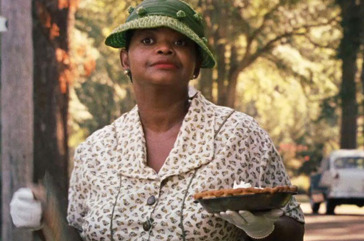
Video: https://youtu.be/8fgub5zkBVk
During the Reconstructionperiod, blacks began to take leadership roles and were pushing hard for legislative changes for equality. Trying to disregard the progress of the blacks and to keep blacks and whites separated, the "Jim Crow" laws were established. Skeeter obtained a copy of "The Mississippi Code of Conduct for Non-Whites" and began to read the laws that were being enforced on black people. Here are a few examples of the laws: Books were not to be used between the white and colored schools, they could only be used by the race first using them. Black barbers could not serve white women or girls. Anyone who printed, published or circulated materials about social equality between whites and negroes is subject to imprisonment. Interracial marriage was illegal. Most blacks couldn't vote because they were unable to pass a voter literacy tests. Blacks couldn't use the same public facilities as whites, nor live in many white towns, or got to the same schools as whites. During the Reconstruction period the Ku Klux Klan (KKK) was established to impose violence on both black and white leaders because they were wanting to reverse the laws and progress of the Reconstruction advancements. To further undermine the progress made, the US Supreme Court stated in the Plessy v. Ferguson case that facilities for blacks and whites could be "separate but equal." Years later, in the "Brown v. Board of Education"case the US Supreme Court made segregation illegal in the public schools. The Civil Rights Act of 1957, signed by President Eisenhower, declared that anyone trying to prevent someone from voting could be punished with federal prosecution. In 1963 the March on Washingtonwas a civil rights movement organized by Civil Rights leaders of Martin Luther King, A. Philip Randolph, and Bayard Rustin. It was a peaceful march of over 200,000 people to bring attention and to force civil rights legislation and job equality for everyone. Martin Luther King's "I Have a Dream" speech became the slogan for equality and freedom. The Civil Rights Act of 1964, signed by President John F. Kennedy, proclaimed equal employment for all and federal authorities could be used to make sure all public facilities were integrated. The Voting Rights Act of 1965banned the use of all voter literacy tests. 1968 the Fair Housing Act became a law that prevented housing discrimination based on race, national origin, religion and sex. Civil Rights Leaders and activists, Martin Luther King, Medgar Evers, Malcom X, and President John F. Kennedy all fought hard for the Civil Rights movement. However, during that time, they were assassinated.
The book was published and was a huge success - except Ms. Hilly didn't like it. Ms. Hilly read the book and immediately knew Chapter 12 of the book was about her. She threatened Skeeter with a law suit but got no satisfaction from that threat. Aibileen got retaliation as Ms. Hilly pressured Ms. Elizabeth to fire her. The most touching part of the movie: https://youtu.be/FuyAt68pj3I
The cast of The Helps consists of Viola Davis as Aibileen Clark, Emma Stone as Eugenia "Skeeter" Phelan, Octavia Spencer as Minny Jackson, Jessica Chastain as Celia Rae Foote, Bryce Dallas Howard as Hilly Walters Holbrook, Allison Janney as Charlotte Phelan, Anna O'Reilly as Elizabeth Leefolt, Chris Lowell as Stuart Whitworth, Sissy Spacek as Mrs. Walters, Cicely Tyson as Constantine Bates, Mike Vogel as Johnny Foote, Anna Camp as Jolene French, Brian Kerwin as Robert Phelan, Aunjanue Ellis as Yule May Davis, Ted Welch as William Holbrook, Wes Chatham as Carlton Phelan, Shane McRae as Raleigh Leefolt, Roslyn Ruff as Pascagoula, Tarra Riggs as Gretchen, LaChanze as Rachel Bates, Mary Steenburgen as Elaine Stein, Leslie Jordan as Mr. Blackly, David Oyelowo as Preacher Green, Dana Ivey as Grace Higginbotham, Tiffany Brouwer as Rebeca, Carol Lee as Pearly, Carol Sutton as Callie, Ashley Johnson as Mary Beth Caldwell, and Nelsan Ellis as Henry.

https://goo.gl/images/muZWkr
How do children learn about race, biases, and prejudice? Racism is how people interpret, adopt, and repeat inequality. Are we born with preconceived concepts of racism? Babies are born capable of learning things without being taught - how to suck for nourishment, how to make sounds to communicate, how to crawl, and they learn to talk by listening to others. As children grow they learn to sort things by colors and shapes. At an early age they begin to sort their world and form their own ideas. Children use this cognitive development to sort people too. However, they are not forming racism, they are observing and categorizing. Erin N. Winkler from the Africology Department at the University of Wisconsin-Milwaukee has studied the topic of "how children form their ideas about race during early stages of development" (https://www.wiscontext.org/how-kids-learn-about-race-stereotypes-and-prejudice).
"As curious young minds begin to figure out shapes and colors, they're also seeing visible differences among people and determining their own identities - including racial awareness. Of course, this development doesn't mean that children are inherently bigoted - rather, their thinking about race stems from normal processes of observing and categorizing." (Winkler, 2009)
Studies have been conducted as far back as the 1940s-1950s when Mamie and Kenneth Clark did their "Doll Study." The study gave African-American children a choice between a black doll and a white doll. (The Life and Challenges of Mamie and Kenneth Clark: https://youtu.be/kG90mSaWUpE). The majority of the children preferred the white doll and gave more positive qualities to the white doll.
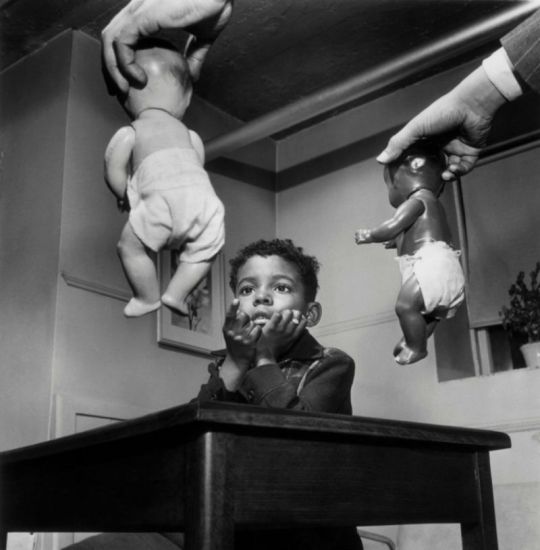
https://goo.gl/images/28mA1j

https://goo.gl/images/nhLMcJ
There was a racism experiment conducted in a classroom by a 3rd grade teacher, Jane Elliott from Riceville, Iowa. Her experiment was carried out after the assassination of Martin Luther King. She wanted her students to internalize and begin to understand what racism and discrimination felt like. Brown Eyes and Blue Eyes Racism Experiment: https://youtu.be/KHxFuO2Nk-0. In Jane Elliot's experiment she began by dividing her students into two groups of eye colors - The Brown-eyed group and The Blue-eyed group. She told the children that the children with brown eyes were "superior and smarter" and gave them extra privileges and praise. She then told the children with blue eyes they were "inferior, unruly, and untrustworthy," and treated them like second class citizens. The next day roles were reversed. Jane Elliott was shocked at what she seen. “I watched what had been marvelous, cooperative, wonderful, thoughtful children turn into nasty, vicious, discriminating little third-graders, in the space of 15 minutes.” Jane Elliot explained to the children that what they learned over the last two days was "a filthy, nasty word called discrimination," which means "treating people a certain way because they are different." Through her experiment, she was able to teach the children what it felt like to be victims of prejudice.
At the University of Yale's Baby Lab that supports the research of Erin N. Winkler. Are babies born with a type of bias? is produced by CNN's Anderson Cooper as he visits the University of Yale's Baby Lab where researchers study the minds of infants - https://youtu.be/3EoNYklyShs.
Two more studies were conducted from the University of Yale's Child Study Center where they investigate human development to understand the mental health of children. In 2010, AC360°team reinvestigated the original "Doll Study" to determine what are children's current racial beliefs, attitudes, preferences, and skin tone preferences at two different developmental stages. This is the outcome of that study: of Inside the AC360 Doll Study: https://www.youtube.com/watch?v=DYCz1ppTjiM. To further this Doll Study, parents were interviewed as to what their responses were about their children's answers in that study, I Was Upset of How My Child Views Race: https://www.youtube.com/watch?v=Sm_CfET1Ffg.
My understandings from the three videos and research is that racism or racial bias is a significant problem. If we don't believe it is a problem, then why are so many black children choosing the white dolls over their own skin toned black dolls?

https://goo.gl/images/yqg5Ks
Kids on Race: The Hidden Picture did another study: A Look at Race Relations through a Child's Eyes. This study interviewed 145 Kids at 6 schools across 3 states. The children were majority white, majority African American, and racially diverse. Children were shown two pictures with one white and one black child, both near a swing. The study reveals that 70% of white children interpreted there was something negative happening, as opposed to only 38% of the black children. https://i2.cdn.turner.com/cnn/2012/images/03/29/ac360.race.study.pdf
Skin Color - The Way Kids See It (https://youtu.be/JcAuO0PNnrs) shows that there is hope that change in children's perception or racism is shifting.
Kiri Davis, a young filmmaker, conducted a documentary, A Girl Like Me: (https://youtu.be/z0BxFRu_SOw) that shows there is still a racial gap in our American Culture. In this video she interviews young African-American women and they discuss finding their own identities and being accepted. She also conducted her own "doll test" on 21 black children. 15 out of the 21 children chose the white doll. Why do African-Americans still feel the effects of racism so many years after the Civil Rights Movement?
What needs to happen to ensure children become more accepting of people of all races and cultures? "Children are aware very young that color, language, gender, and physical ability differences are connected with privilege and power." (Derman-Sparks) Jane Elliott stated: "Racism was something that people learned" - something adults need to stop displaying and teaching. Adults need to educate themselves, so they can be knowledgeable and accurate when talking to children about racial discrimination. We need to be aware of our own actions as children learn about their world and the people around them from their observations. We need to talk about what acceptance of all race and cultures should look like and feel like. We need to discuss openly, age appropriate conversations, about racial differences and treat people as equals, worthy, and have potential. Children should not be brought up as "colorblind" and not understanding what racism is. We need to empower children to be racially conscious and teach them how to combat inequality and discrimination. They need to learn how to celebrate diversity and to recognize their own identities. Children should be taught what it is like to live in an unequal society. Children should not learn about negative stereotypes, biases, or racism from social media, movies, or inappropriate role models. As we teach children, adults need to empower them in building a positive self-identity that can "develop critical thinking and the skills for standing up for oneself and others in the face of injustice." (Derman-Sparkes) Children need to learn about racism from a trusting adult that will teach them not to discriminate and to treat everyone equally - we are all the same, just a little different.
# I wonder how fast information could have spread and how many people would have been reached if digital activismwas available during the Civil Rights Movement #
CHILDREN'S BOOKS ON RACE AND RACISM:
All the Colors of the Earth by Sheila Hamanaka
All the Colors We Are: The Story of How We Got Our Skin Color by Katie Kissinger
Amazing Grace by Mary Hoffman
Chocolate Me! by Taye Diggs
Happy To Be Nappy by Bell Hooks
I Am Beautiful - When I Look at Me, I See....by Simona da Costa
It's Okay To Be Different by Todd Parr
Same, Same But Different by Jenny Sue Kostecki-Shaw
Shades of People by Shelley Rotner
Skin Again by Bell Hooks
The Colors of Us by Karen Katz
The Skin I'm In: A First Look at Racism by Pat Thomas
The Skin You Live in by Michael Tayler
We're Different, We're the Same by Bobbie Kates (Sesame Street)
Whoever You Are by Mem Fox
RESOURCES:
All the Colors We Are: The Story of How We Get Our Skin Color by Katie Kissinger
How Real Is Race? A Sourcebook on Rae, Culture, and Biology by Carol C. Mukhopadhyay, Rosemary Henze, Yolanda T. Moses
REFERENCES:
Derman-Sparks, L & A.B.C. Task Force. Anti-Bias Curriculum: Tools For Empowering Young Chilren. Retrieved from: https://www.teachingforchange.org/wp-content/uploads/2012/08/ec_antibiascurriculum_english.pdf
Derman-Sparkes, L., Tanaka Higa, C., Sparkes, B. Children Race and Racism: How Race Awareness Develops. Retrived from: https://www.teachingforchange.org/wp-content/uploads/2012/08/ec_childrenraceracism_english.pdf
Forgerson Hindley, A & Olsen Edwards, Julie (2017) Early Childhood Racial Identity - The Potential Powerful Role for Museum Programming. Journal of Museum Education 2017, VOL 42, NO 1, PGS. 13-21 Retrieved from: https://www.tandfonline.com/doi/pdf/10.1080/10598650.2016.1265851?needAccess=true
Jacobs, T. (2017) Are Babies Born Biased? Pacific Standard Magazine. Retrieved from: https://psmag.com/social-justice/are-babies-born-biased
NAEYC Pathways to Cultural Competence Project. Montana Early Childhood Project. Vol. 7. Retrieved from: https://www.mtecp.org/pdfs/Christy/7NAEYC%20PCCP.pdf
Online Report for CNN Anderson Cooper 360° Special Report “Kids on Race: The Hidden Picture” (2012) Retrieved from: https://i2.cdn.turner.com/cnn/2012/images/03/29/ac360.race.study.pdf
Winkler, E.N. (2016) Children are not Colorblind: How Young Children Learn Race. University of Wisconsin-Milwaukee. Retrieved from: https://inclusions.org/wp-content/uploads/2017/11/Children-are-Not-Colorblind.pdf
You is kind. You is smart. You is important.
0 notes